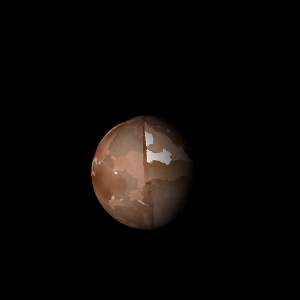|
|
Space Astro
|
Info for exoplanet "Kivi"
| Scientific (actual) data |
|---|
| Name | Kepler-899 b |
| Planet status | Confirmed |
| Radius | 0.239 |
| Orbital period | 19.1789 |
| Discovered | 2016 |
| Updated | 2021-02-05 |
| Tconj | 2454970 |
| Publication | Announced on a website |
| Detection type | Primary Transit |
| Alternate names | 2MASS J19495582+4040508 b, K01585.01, KIC 5470739 b, KOI-1585 b, KOI-1585.01 |
| Star name | Kepler-899 |
| Right ascension | 297.48° |
| Declination | 40.68° |
| Mag j | 14.113 |
| Mag h | 13.725 |
| Mag k | 13.615 |
| Star distance | 1038 |
| Star metallicity | -0.06 |
| Star mass | 0.93 |
| Star radius | 0.91 |
| Star age | 4.07 |
| Star temperature | 5595 |
| Star alternate names | 2MASS J19495582+4040508, KIC 5470739, KOI-1585 |
| Wikipedia article | Kepler-899 b |
Back
| |
| Fictional info (?) |
|---|
| Suggested name | Kivi |
| Planet type | Cold planet |
| It has the longest rotation period (445 days) of any planet in its solar system and rotates in the opposite direction to most other planets.
The two polar ice caps appear to be made largely of sand. |
| Atmosphere | Methane | 34% |
| Ethane | 32% |
| Ozone | 23% |
| Carbon monoxide | 8.8% |
| Hydrogen chloride | 1.5% |
| Hydrogen peroxide | 0.0023% |
| Carbonyl sulfide | 0.00058% |
| Atmospheric pressure | 0.05 bar |
 |
| No known satellites |
| Google search for Kivi |
|
Website by Joachim Michaelis
|
|
|
|